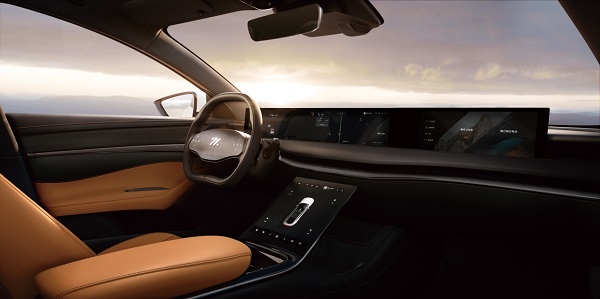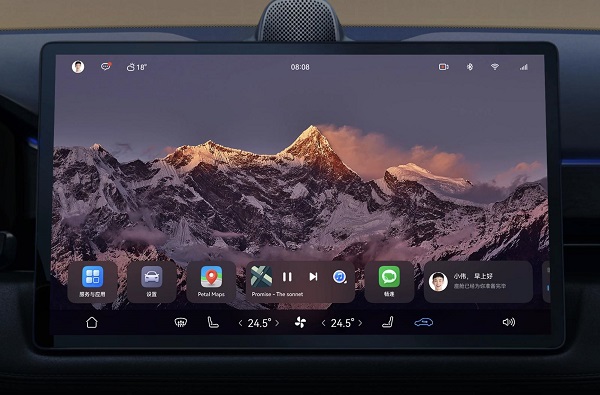With the continuous improvement of the level of automotive intelligence, more and more car manufacturers mention the words "system" and "OS" in the promotion of models, such as HarmonyOS of Wenjie M5, IMOS of Zhiji L7, Galaxy OS of Geely Xingyue L, Coffee Smart Cockpit System of Great Wall, and DiLink Intelligent Network System of BYD, etc. This confirms that car manufacturers are paying more and more attention to operating systems.

According to the classification of the "Vehicle Operating System Standard System" of the National Automobile Standardization Technical Committee, vehicle operating systems are divided into two categories: vehicle operating systems and vehicle control operating systems. Vehicle operating systems are mainly for infotainment and intelligent cockpits, and are used in vehicle control, instrumentation, co-pilot and rear entertainment. The requirements for safety and reliability are at a medium level. This type of operating system is developing rapidly, and the ecosystem relying on this type of operating system is also in a period of rapid development.
In fact, whether it is all kinds of XXX smart cockpit in China, or the system named "OS", it basically belongs to the category of "car operating system". In the domestic car operating system market, major car manufacturers mainly use QNX, Android, Linux systems and customized modifications based on Android and Linux. The above-mentioned Galaxy OS, coffee smart cockpit system, and DiLink all belong to this program, while the self-developed car operating systems include Zebra Zhixing AliOS and Huawei HarmonyOS.
AliOS: Distributed Converged, Native Fusion (SOA) Framework
In April, SAIC Motor officially launched the Zhiji L7. As the first mass-produced model built by Zhiji, the Zhiji L7 brings together the advantages of SAIC Motor Group, Alibaba Group and Zhangjiang Hi-Tech. "The intelligent cockpit and OS system on the Zhiji L7 are all newly developed by Zebra, and a new architecture and system have not been commercially applied yet. Zhiji L7 is the first model of this new system," Liu Tao, co-CEO of Zhiji Automobile, said in an interview with the media.
Zebra Zhixing built the IMOS underlying system for Zhiji L7 based on AliOS. On Zhiji L7, the smart scene screen and the hub screen are highly integrated, allowing users to interact and stream content between different screens. This is due to AliOS ‘multi-screen interactive display framework, which can break the physical boundaries and achieve a multi-screen graphics system for the cockpit.
In addition, with the diversification of vehicle functions, more and more information needs to be shared across domains, and a communication framework to meet the cross-domain, cross-device, and cross-OS requirements of smart cars has emerged. AliOS comes with its own autonomous, controllable, stable and reliable Fusion (SOA) framework, which can realize cross-domain and cross-vehicle cloud integrated communication, and supports SOME/IP and DDS protocols. For automakers, Fusion can realize atomization and serviceization of vehicle hardware capabilities, and OEMs can independently define vehicle open capability interfaces and vehicle-cloud integrated developer platforms, which will greatly improve development efficiency.
HarmonyOS: Full Scene Distribution, Multi-Device Interconnection
In March this year, Huawei officially released the QJI M5 equipped with HarmonyOS. At the beginning of its birth, HarmonyOS showed that it would integrate various end points in life scenarios to form a "super virtual end point", which is also a significant advantage of HarmonyOS, that is, multi-device interconnection. This is also evident in the QJI M5. In the case of logging in to the same account as Huawei’s mobile phone, the car and mobile phone can be seamlessly connected and transferred.

In addition, HarmonyOS inherits the capabilities related to the Android application framework, is compatible with Android applications, and also has certain advantages in the richness of the application ecosystem.
ROM-based system: rich application ecosystem, insufficient stability
As an intelligent cockpit system deeply customized by Yikatong Technology for Geely Automobile based on the new hardware platform, the Galaxy OS carried by Xingyue L has undergone two OTA upgrades after its launch. Although it is named "OS", Galaxy OS is still a ROM system in essence, and Yikatong has customized development based on Android.
From a development perspective, the advantages of ROM-based systems are obvious, only involving the modification of SystemUI and a small number of Framework services. The development cycle is short and the difficulty is low, and the advantages of Android’s rich application ecosystem are also favored by major automakers. However, Android is relatively insecure and stable, so most Android-based systems are only used for in-vehicle infotainment.
Miao Wei, deputy director of the Economic Committee of the National Committee of the Chinese People’s Political Consultative Conference, once said in public: The operating system is the key to the digital transformation of automobile enterprises, and it is a "must for soldiers". Self-developed in-vehicle operating systems have natural advantages in development, iteration, safety and other links, and building autonomous in-vehicle operating systems and even autonomous vehicle control operating systems is the only way.